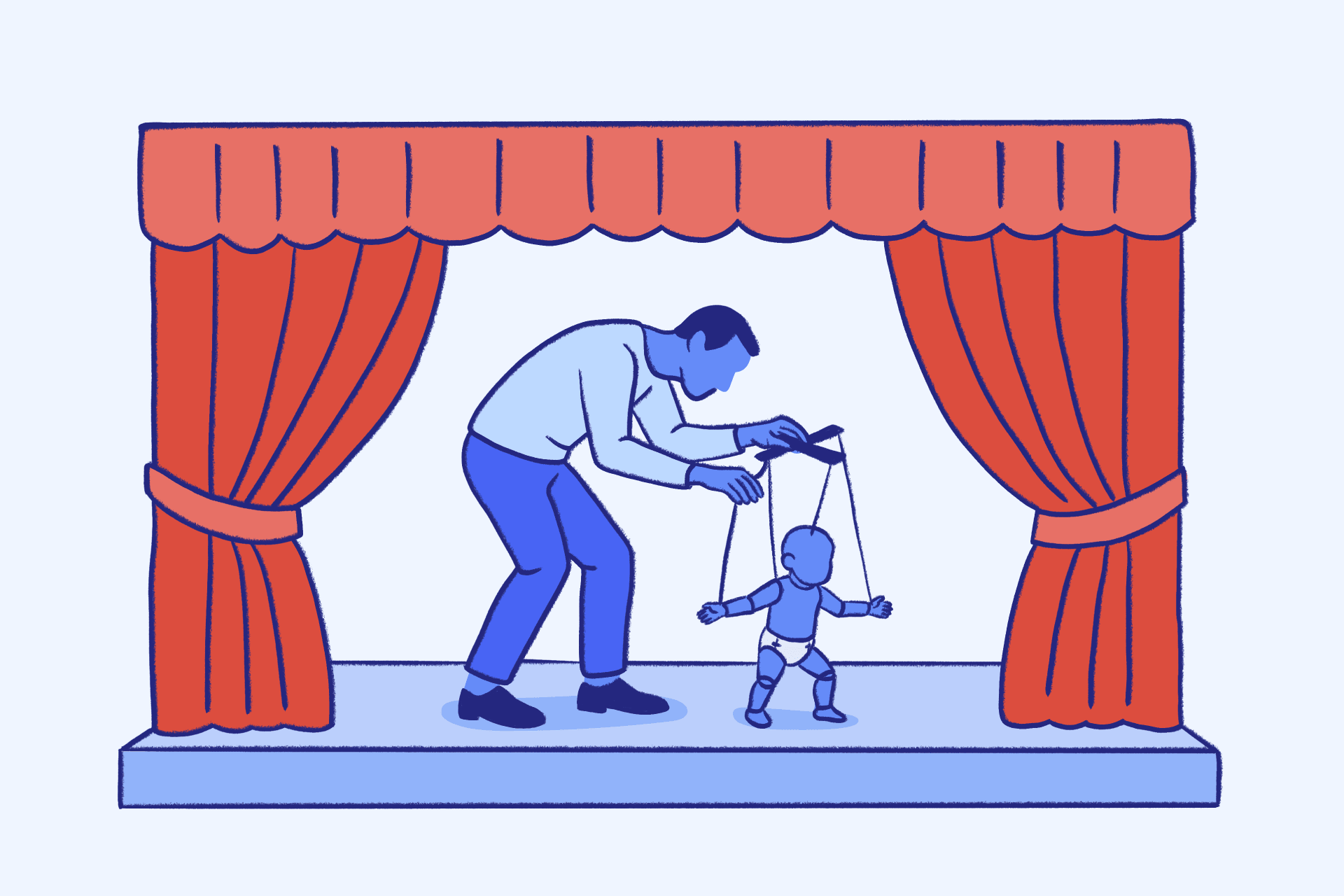Understanding Psychodrama Therapy: Techniques and Benefits



- Psychodrama uses role-play techniques to heal in recovery.
- Psychodrama can be integrated with other therapies like CBT, Gestalt therapy, and DBT.
- Psychodrama can heal trauma and alleviate depression and anxiety symptoms.
Psychodrama is a therapeutic method that uses dramatic techniques, such as role-playing, to help people understand and resolve their emotional conflicts1. During sessions, patient groups enact scenes from their lives or dreams to gain insights and practice new ways of being in the world2.
The goal of psychodrama is for patients to gain mental clarity so they can learn new ways of thinking and cope with their feelings surrounding the event. Through these exercises, patients may see improved social skills, a boost in self-esteem, or a positive attitude shift3. Psychodrama can teach adaptive coping strategies, leading to resilience4.
Incorporating psychodrama into your recovery plan can offer a new perspective on healing and a deeper understanding of yourself.
Origins and Development
Jacob Levy Moreno, a Romanian psychiatrist and psychoanalyst, invented psychodrama in 19215. Moreno studied the power of relationships and group interactions, seeing a person become the healing agent for another. His creation was inspired by improvisation theater and the rise of the psychoanalytic movement led by Sigmund Freud. It became the first form of group psychotherapy.
Moreno quickly developed one of the fundamental concepts, role theory, which shows how social roles shape behavior6. People take on different roles in their lives, and exploring these roles in a therapeutic setting can lead to insights and personal growth.
In the 1940s-60s, interest grew in psychodrama, and it became a therapeutic practice. Psychodrama was applied not only in clinical settings but also in educational and community settings. Today, psychodrama can be applied to family therapy, trauma work, and addiction treatment. It’s even being discussed as an alternative method of education in schools.
Core Principles of Psychodrama
Psychodrama therapy is guided by several core principles. Moreno defined these principles7 as:
- Warming up: A process that creates an appropriate environment for spontaneity. This may look like physically shaking your body to loosen up, clearing any doubts, and having silly conversation.
- Spontaneity: By being in the present moment, you can react to things without any preconceived notions. This can benefit role play.
- Creativity: Spontaneity helps catalyze creativity—it is born by reacting the way you normally would, a true-to-self reaction. When you are rooted in the here and now, there’s more opportunity for play, creativity, and new ways of thinking.
- Encounter: Meeting another person where they are at and mentally viewing the event from their perspective.
- Tele: Sensing the feeling/bond between 2+ people. During the first encounter between a group, the tele should be neutral. Then, a positive or negative feeling forms over time and between interactions.
- Co-conscious vs co-unconscious: These are states shared between 2+ people. A co-conscious state is when a particular feeling in a group is voiced or acted out, so it is known. A co-unconscious state occurs when 2+ people who are closely existing develop a normal atmosphere amongst themselves. This is created through shared and unshared feelings, actions, and beliefs, but it is not outrightly stated.
- Role: An identity that someone takes on in the moment, depending on the context. For example, the eldest sibling may assume the role of parent if the younger sibling is in distress and the parent is not nearby.
- Role vs ego: The ego is a concept that helps us balance between societal norms and our true desires. In psychodrama, the ego actively explores roles, emotions, and conflicts. It aims to strengthen ego function.
- Role reversal: Changing from your current role to the other person’s. This can help you gain insight.
Looking at all these principles, we can form the inner workings of psychodrama. Focusing on spontaneity and creativity while role-playing allows you to develop a new perspective on past events, feelings, and behaviors.
Key Roles in Psychodrama
There are 3 key characters in a psychodrama session: the protagonist, auxiliary egos, and the director.
The protagonist takes center stage during a psychodrama session. They are the main focus and typically present an issue or situation they want to explore and work through. The protagonist enacts personal situations, bringing them to life through role-playing.
Auxiliary egos are people in the group who play roles within the protagonist’s enacted scenario. They may portray significant people, objects, or aspects of the protagonist’s internal world. Auxiliary egos offer alternative perspectives for the protagonist.
The director is the therapist or facilitator guiding the session. They set the stage, facilitate interactions, and ensure a supportive environment. The director leads warm-up activities, and they may intervene or suggest things to facilitate exploration and resolution.
Explore Anxiety Treatment Centers
Techniques and Processes: How It Works
In a psychodrama session, you may participate in various techniques to find the best for your healing. At the core, you will be role-playing as the protagonist or acting out specific roles or situations to explore emotions, thoughts, and behaviors.
From there, you could practice mirroring, where the auxiliary egos copy your behaviors, emotions, or body language—this can foster self-awareness.
Another group member may practice doubling, voicing your thoughts and opinions for you. Speaking your internal feelings aloud can help deepen your understanding of the event.
You may role reverse with another person, allowing you to experience the situation from a new perspective.
Sometimes, you, as the protagonist, talk through your inner thoughts, providing insight into your internal dialogue and expressed emotions. This is called soliloquy.
Practices such as these can strengthen your emotional awareness. The director (your therapist) will ensure that the sociometry of the group is healthy and balanced, meaning the auxiliary egos are well suited to support the protagonist. As group dynamics grow, these techniques will become easier and easier, making room for deeper exploration.
The Role of Action and Enactment
Physically acting out past experiences is what sets psychodrama apart from traditional talk therapy. This approach is immersive and engaging, and activating all the senses can help patients work through buried feelings. Psychodrama pulls patients out of their internal world and allows them to experience emotions, thoughts, and behaviors directly.
Psychodrama can be particularly effective for patients who feel limited by traditional talk therapy. Reenacting certain events can provide insights and much needed emotional release.
Applications of Psychodrama
Psychodrama is commonly done in group therapy, although it can be used in individual and family therapy, as well. In a group or family setting, other participants in the group would help set the scene, while individual therapy usually involves the counselor and the patient engaging in this practice.
Psychodrama can be beneficial for specific conditions, such as trauma. Trauma affects both the brain and the body8, and it can be hard to find words to describe trauma (because Broca’s area, the part of the brain responsible for language, is less active when remembering trauma9), making it difficult to process in traditional talk therapy. Psychodrama provides an alternative way to connect the mind and body to work through trauma.
As this approach aims to boost self-esteem and self-sufficiency, psychodrama can improve depression and anxiety symptoms10. It can also aid addiction recovery. Role playing a patient’s addictive behaviors helps them understand the roots of their substance use and develop healthier coping strategies.
Any patient can benefit from psychodrama—it’s not only for self-proclaiming “creative” people. With the right guidance, engaging in these practices can improve communication, self-awareness, and promote healing.
Integrating Psychodrama with Other Therapies
Psychodrama can be integrated with other therapeutic modalities to create a well-rounded treatment plan.
Cognitive behavioral therapy (CBT), one of the most common and effective therapies for addiction11 and mental health disorders, can combine with elements of psychodrama. Your therapist may use role-play or family of origin imagery12 (exploring mental images, memories, and perceptions of your family and childhood) in addition to CBT techniques that replace unhealthy thought patterns with more positive ones.
Psychodrama can also work in conjunction with Gestalt therapy. This therapy takes a “whole person” approach to healing and looks at many aspects of someone’s life that may have contributed to their struggles instead of just one event or trauma. Gestalt therapists can use role reversal and the empty chair method13 (similar to role-playing with an auxiliary ego, but instead, you interact with an empty chair) in addition to Gestalt techniques such as “I” statements.
Dialectical behavioral therapy (DBT) compliments psychodrama, as well. DBT has similar processes to CBT; however, there is an emphasis on mindfulness and healing in the present moment. While engaging in role play and other psychodrama practices, focusing on mindful words and movements can increase spontaneity and creativity—thus facilitating exploration and recovery breakthroughs.
Questions to Ask Your Provider About Psychodrama
Before beginning psychodrama sessions, you may consider asking your provider a few questions, such as
- How do you act as the director of the group? Can you give examples of how you mediate sessions?
- How do you determine who would be a good auxiliary ego for my role-playing session?
- How would you evaluate my progress in the sessions?
- Are there follow-up sessions to break down what we’ve learned in the psychodrama sessions?
Training and Certification
As a therapist, proper psychodrama training can ensure that your patients get the most out of your sessions. You can receive training through many organizations; some are in person, while others are virtual. At the American Board of Psychodrama14, you can learn the theory, master the techniques, and understand group dynamics to facilitate your patients’ healing.
If you’re seeking out a psychodrama therapist, ensure that they have this certification and proper experience and education—this should be a Master’s degree or higher, and their credentials can look like Psy.D., M.S.W., and L.M.H.C. Ask them questions such as
- What does a typical psychodrama session look like?
- How do you integrate psychodrama practices into other therapies?
- How will you manage the group dynamics?
To find more resources to support your recovery journey, visit our Resources Hub.
-
Orkibi, H., & Feniger-Schaal, R. (2019). Integrative systematic review of psychodrama psychotherapy research: Trends and methodological implications. PLOS ONE, 14(2), e0212575. https://doi.org/10.1371/journal.pone.0212575
-
Bucharová, M., Malá, A., Kantor, J., & Svobodová, Z. (2020). Arts therapies interventions and their outcomes in the treatment of eating disorders: Scoping review protocol. Behavioral Sciences, 10(12), 188. https://doi.org/10.3390/bs10120188
-
López-González, M. A., Morales-Landazábal, P., & Topa, G. (2021). Psychodrama group therapy for social issues: A systematic review of controlled clinical trials. International Journal of Environmental Research and Public Health, 18(9), 4442. https://www.ncbi.nlm.nih.gov/pmc/articles/PMC8122755/
-
Bucuţă, M. D., Dima, G., & Testoni, I. (2018). “When you thought that there is no one and nothing”: The value of psychodrama in working with abused women. Frontiers in Psychology, 9. https://www.frontiersin.org/articles/10.3389/fpsyg.2018.01518
-
A brief history of psychodrama. (2007). Birmingham Institute for Psychodrama. https://www.psychodrama.org.uk/wp-content/uploads/2021/01/Brief-History-of-Psychodrama-.pdf
-
Psychodrama—An overview | sciencedirect topics. (n.d.). Retrieved December 7, 2023, from https://www.sciencedirect.com/topics/social-sciences/psychodrama
-
Karp, M., Holmes, P., & Bradshaw Tauvan, K. (1998). Principles of Psychodrama. The Handbook of Psychodrama, 29–45. https://psychodrama.org.nz/wp-content/uploads/resources/principles-psychodrama.pdf
-
Treatment (US), C. for S. A. (2014). Understanding the impact of trauma. In Trauma-Informed Care in Behavioral Health Services. Substance Abuse and Mental Health Services Administration (US). https://www.ncbi.nlm.nih.gov/books/NBK207191/
-
Psychodrama as an effective treatment for trauma and PTSD experience. (n.d.). Https://Www.Apadivisions.Org. Retrieved December 7, 2023, from https://www.apadivisions.org/division-49/news-events/psychodrama-trauma-treatment
-
Uğurlu, T. T., Oğuzhanoğlu, N. K., & Ateşcı, F. (2020). Effect of psychodrama group therapy on remission and relapse in opioid dependence. Archives of Neuropsychiatry, 57(3), 197–203. https://www.ncbi.nlm.nih.gov/pmc/articles/PMC7481980/
-
McHugh, R. K., Hearon, B. A., & Otto, M. W. (2010). Cognitive behavioral therapy for substance use disorders. Psychiatric Clinics of North America, 33(3), 511–525. https://www.sciencedirect.com/science/article/abs/pii/S0193953X10000547?via%3Dihub
-
Psychodrama and cognitive behavioral therapy: Complementary companions Part I. (n.d.). Https://Www.Apadivisions.Org. Retrieved December 7, 2023, from https://www.apadivisions.org/division-49/publications/newsletter/group-psychologist/2011/07/psychodrama
-
Apa psycnet. (n.d.). Retrieved December 7, 2023, from https://psycnet.apa.org/doiLanding?doi=10.1037%2F0022-006X.63.3.419
-
Maddon, C. (n.d.). Home. Psychodrama Certification. Retrieved December 7, 2023, from https://psychodramacertification.org/
Our Promise
How Is Recovery.com Different?
We believe everyone deserves access to accurate, unbiased information about mental health and recovery. That’s why we have a comprehensive set of treatment providers and don't charge for inclusion. Any center that meets our criteria can list for free. We do not and have never accepted fees for referring someone to a particular center. Providers who advertise with us must be verified by our Research Team and we clearly mark their status as advertisers.
Our goal is to help you choose the best path for your recovery. That begins with information you can trust.






